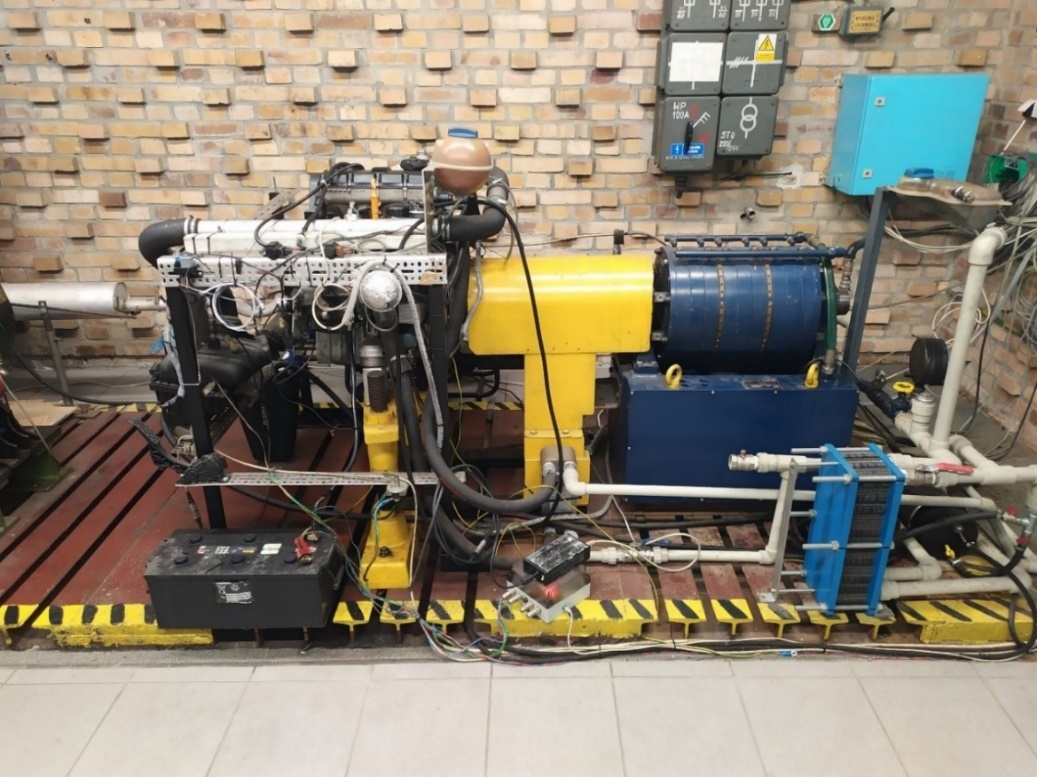Current issue
Online first
Archive
About the Journal
Aims and scope
Publisher and Editorial
Advertising policy
For Authors
Paper review procedures
Procedures protecting authentic authorship of papers
Paper preparation manual
Plagiarism check
Publication ethics
Reviewers
APC
Editorial and Scientific Board
Contact
Reviewers
Impact of water content in fuel for smoke opacity
1
Department of Automotive Engineering, Wroclaw University of Science and Technology, Poland
Submission date: 2023-05-31
Final revision date: 2023-07-02
Acceptance date: 2023-07-19
Online publication date: 2023-09-02
Publication date: 2023-11-11
Corresponding author
Piotr Haller
Department of Automotive Engineering, Wroclaw University of Science and Technology, Poland
Department of Automotive Engineering, Wroclaw University of Science and Technology, Poland
Combustion Engines 2023,195(4), 123-127
KEYWORDS
TOPICS
ABSTRACT
The development of internal combustion engines is focused at solving problems like: fulfillment with increasingly stringent requirements regarding exhaust emissions and elimination of threats to the natural environment. The subject of this thesis is to assessment the impact of supplying a compression-ignition engine with hydrocarbon mixtures and to examine the impact of water on external parameters of the engine, such as smoke opacity. The tests were carried out using a innovative mixture of hydrated fusel oils, ethyl alcohol and ionic and/or non-ionic emulsifiers, from which was made of microemulsions with a water content in diesel oil of 5, 10, 15, 20 and 25%. The main tests were carried out on a 4-cylinder VW 1.9 TDI internal combustion engine at a constant engine crankshaft speed of 3000 rpm and variable load of 0, 30, 60, 90, 120, 150 and 180 Nm. The tests carried out showed a beneficial effect of the water content in the diesel oil on the reduction of the average value of smoke opacity, which systematically decreases with the increase in the percentage of water in the diesel oil.
REFERENCES (17)
1.
Abd Razak IF, Yahya WJ, Ithnin AM, Rashid M, Zuber MA, Kadir HA et al. Effects of different water percentages in non-surfactant water-in-diesel emulsion fuel on the performance and exhaust emissions of a small-scale industrial burner. Clean Techn Environ Policy. 2021;23:2386-2397. https://doi.org/10.1007/s10098....
2.
Abdollahi M, Ghobadian B, Najafi G, Hoseini SS, Mofijur M, Mazlan M. Impact of water–biodiesel–diesel nano-emulsion fuel on performance parameters and diesel engine emission. Fuel. 2020;280;118576. https://doi.org/10.1016/j.fuel....
3.
Ardabili SF, Najafi B, Aghbashlo M, Khounani Z, Tabatabaei M. Performance and emission analysis of a dual-fuel engine operating on high natural gas substitution rates ignited by aqueous carbon nanoparticles-laden diesel/biodiesel emulsions. Fuel. 2021;294:120246. https://doi.org/10.1016/j.fuel...
4.
Dorokhov AS, Kataev YV, Gradov EA. Influence of cavitation on the working surfaces of the cylinder–piston group in a diesel engine during maintenance. Russ Engin Res. 2021;41(11):1009-1013. https://doi.org/10.3103/S10687....
5.
Elumalai PV, Nambiraj M, Parthasarathy M, Balasubramanian D, Hariharan V, Jayakar J. Experimental investigation to reduce environmental pollutants using biofuel nano-water emulsion in thermal barrier coated engine. Fuel. 2021;285:119200. https://doi.org/10.1016/j.fuel....
6.
Elumalai PV, Parthasarathy M, Hariharan V, Jayakar J, Iqbal SM. Evaluation of water emulsion in biodiesel for engine performance and emission characteristics. J Therm Anal Calorim. 2022;147:4285-4301. https://doi.org/10.1007/s10973....
7.
Gopidesi RK, Premkartikkumar SR. Evaluating the characteristics of a diesel engine fuelled with water in diesel emulsion and hythane gas in a dual-fuel mode. International Journal of Ambient Energy. 2022;43(1):853-857. https://doi.org/10.1080/014307....
8.
Haller P, Jankowski A, Kolanek C, Walkowiak W. Research of water–fuel microemulsions as fuel for diesel engine. Journal of KONES Powertrain and Transport. 2015;19:165-170. https://doi.org/10.5604/123140....
9.
Jankowski A. Influence of chosen parameters of water fuel microemulsion on combustion processes, emission level of nitrogen oxides and fuel consumption of CI engine. Journal of KONES Powertrain and Transport. 2011;18(4):593-600.
10.
Jankowski A, Kowalski M. Alternative fuel in the combustion process of combustion engines. Journal of KONBiN. 2018;48(1):69-82. https://doi.org/10.2478/jok-20....
11.
Jankowski A, Sowa K, Zabłocki M. Some aspects using of micro emulsion fuel-water for supply of combustion engines. Journal of KONES 2009 Powertrain and Transport. 2009;16(4):531-538.
12.
Kaźmierczak U, Kulczycki A, Dzięgielewski W, Jankowski A. Microemulsion bioliquids (in Polish). Journal of KONBiN. 2012;21(1):141-148. https://doi.org/10.2478/jok-20....
13.
Kesharvani S, Chhabra M, Dwivedi G, Verma TN, Pugazhendhi A. Execution and emission characteristics of automotive compression ignition engine powered by cerium oxide nanoparticles doped water diesel emulsion fuel. Fuel. 2023;349:128670. https://doi.org/10.1016/j.fuel....
14.
Kornienko V, Radchenko R, Radchenko M, Radchenko A, Pavlenko A, Konovalov D. Cooling cyclic air of marine engine with water-fuel emulsion combustion by exhaust heat recovery chiller. Energies. 2022;15(1):248. https://doi.org/10.3390/en1501....
15.
Tamam MQM, Yahya WJ, Ithnin AM, Abdullah NR, Kadir HA, Rahman MM et al. Performance and emission studies of a common rail turbocharged diesel electric generator fueled with emulsifier free water/diesel emulsion. Energy. 2023;268:126704. https://doi.org/10.1016/j.ener....
16.
Tornatore C, Marchitto L, Teodosio L, Massoli P, Bellettre J. Performance and emissions of a spark ignition engine fueled with water-in-gasoline emulsion produced through micro-channels emulsification. Appl Sci. 2021;11(20):9453. https://doi.org/10.3390/app112....
17.
Yadykova AY, Ilyin SO. Rheological, thermophysical, and morphological features of original and hydrogenated bio-oils. Sustainable Energy and Fuels. 2021;5:4425-4433. https://doi.org/10.1039/D1SE00....
Share
RELATED ARTICLE
We process personal data collected when visiting the website. The function of obtaining information about users and their behavior is carried out by voluntarily entered information in forms and saving cookies in end devices. Data, including cookies, are used to provide services, improve the user experience and to analyze the traffic in accordance with the Privacy policy. Data are also collected and processed by Google Analytics tool (more).
You can change cookies settings in your browser. Restricted use of cookies in the browser configuration may affect some functionalities of the website.
You can change cookies settings in your browser. Restricted use of cookies in the browser configuration may affect some functionalities of the website.



